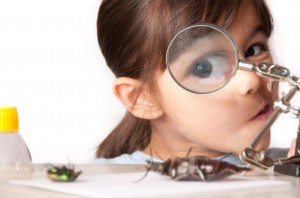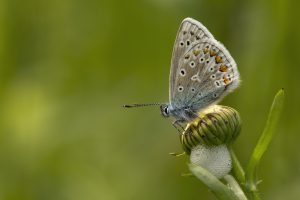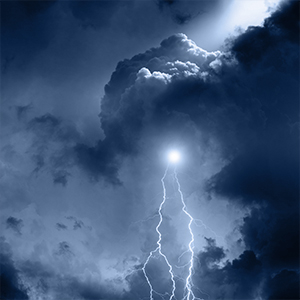
Has your kid ever asked you what you do in the lab all day? (“Hmm…good question, what am I doing all day?”) A simplified answer might sound something like this: I observe, ask a question, collect data, and use those data to answer the question (or at least try!). The scientific method may be difficult to explain to a kindergartner, but you can always start by encouraging them to observe the world around them, ask lots of questions—and even help collect data. In fact, with the help of technology, your child can become a scientist without 7 long years in graduate school or ever setting foot in a lab. A “citizen scientist”, that is. All you need is a smart phone. Here is a list of apps that can make your kid, grandma, neighbor, anyone, become a citizen scientist by helping professional scientists collect data for their research. The apps are all free to download, easy to use and have a real impact on the scientific community.
1. iNaturalist:

Are you sick of not knowing the answer when your child asks “What’s this bug?” on a nature walk? You need the iNaturalist app. Here’s how it works: You observe an interesting plant/insect/animal, take a photo, and the app identifies the name of the species and some basic information about it. There is also the option to share your finding with other users and they can suggest an identification. iNaturalist shares your findings with scientific data repositories like the Global Biodiversity Information Facility to help scientists understand biodiversity. You can even set up scavenger hunt-like activities: iNaturalist birthday party anyone?
The Loss of the Night app invites you to measure the light pollution at your location by observing stars. Using the app, you identify certain stars and report whether you are able to see that star from your location. The data are sent to the National Optical Astronomy Observatory to help understand the effects of light pollution on economic activity, distribution of animals and occurrence of certain diseases. Have fun stargazing while contributing to science!
Clouds aren’t just fun to look at, they also play an important role in controlling temperature and climate. NASA has many satellites orbiting the Earth collecting data about clouds, but satellites only see clouds from a top angle and in low-definition. This is why NASA needs your help to observe clouds from the ground to capture clouds in detail. With the Nasa Globe Clouds app, you can take pictures of clouds and send them to NASA. This helps scientists better understand the different types of clouds and their impact on our climate.

4. mPing:
Weather radars provide a lot of data about weather conditions, but they often can’t tell exactly what’s happening on the ground. The mPing app allows you to submit reports of rain, snow, hail, wind, tornados or floods that happen around you. The reports are archived and used by the National Severe Storms Laboratory, Cooperative Institute for Mesoscale Meteorological Studies and National Weather Service forecasters to develop better technologies for weather analysis and prediction.
5. TuberSpot:
Tuberculosis diagnosis is typically done by examining patient mucus samples under a microscope and manually counting the number of Mycobacterium tuberculosis bacteria. But it’s not as easy as it seems. Under a microscope, the bacteria look like pink worms; but there are also other blobs of pink artifacts and sometimes it’s difficult to tell them apart. The diagnostic process takes a lot of time and labor. This is where you can help by playing the TuberSpot app game. This app started as a research project at the Technical University of Madrid with the goal of using crowdsourcing to make tuberculosis diagnosis faster and more accurate. In this game, you count the number of bacteria in microscopy images of real patient samples. The data are then collected from multiple gamers to make an accurate diagnosis.
MalariaSpot Bubbles is developed by the same creators as TuberSpot with a similar concept. Malaria diagnosis is done by examining blood samples from patients. You must first identify the parasite that causes the disease and then manually count the number of parasites. To further complicate things, there are five species of Malaria parasites—and they all look alike. MalariaSpot Bubbles combines parasite identification with the Bubbles game. It’s a great way to have fun and save lives at the same time!
Have you used other fun citizen scientist apps? We would love to hear about them!
Latest posts by Johanna Lee (see all)
- Microfluidic Organoids Could Revolutionize Breast Cancer Treatment - March 25, 2025
- Bacteria From Insect Guts Could Help Degrade Plastic - January 28, 2025
- A Diabetes Drug, Metformin, Slows Aging in Male Monkeys - December 19, 2024
